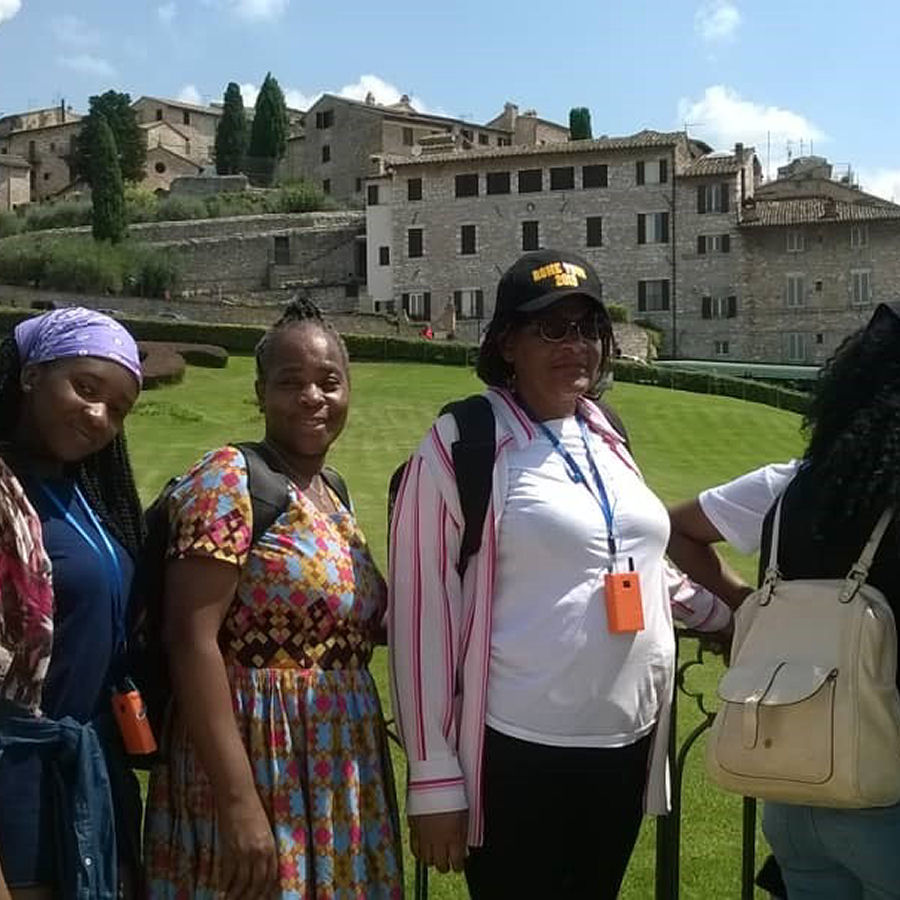FRENCH TRIP TO FRANCE
Learning in a classroom is an important part in mastering a new language. However, immersing oneself in the French language and culture cannot be overlooked in today’s educational system. The Dominican Convent gives French students the opportunity to soak in fresh experiences of the French culture each year.
The trip enables students to build their confidence and fluency in the French language as they interact with the locals, establish new and lasting friendships and gain first hand experiences of the values, traditions and norms of the French people. Students are able to put into practice all their classroom acquired knowledge of French. The trip also serves to build a passion for the French language amongst students and, to allow them to learn different skills which they can apply in their future careers.
RELIGIOUS STUDIES TRIP TO ITALY
The country of Italy was once the centre of the world’s greatest Empire and today it remains a cultural, historical and core destination of Christianity. Every year, the Dominican Convent provides an opportunity for all the Form 2 Religious Studies students to travel to Italy for a memorable reflection on the country’s religious and enriching experiences. The trip provides students with an understanding of the history of the early Catholic Church and the role of the Pope. Places of religious significance are incorporated into the trip in order to make alive the role of saints and martyrs in the Catholic Church, particularly in the city of Assisi and several Basilicas in Rome.
Students will also be better positioned to explore their own beliefs, whilst reinforcing their faith. Additionally, students visit artistic places of interest and the beautiful coastal scenery as a means of strengthening the Art, History and Culture of the Dominican Convent School.
GEOGRAPHY TRIP TO VICTORIA FALLS
The Geography Department organises a trip for its Form 1 students to the majestic Victoria Falls in the third term of every year. This trip includes visits to Bulawayo, Matopos, the Hwange National Park and Hwange Colliery. In Matopos, a world heritage site, students have the opportunity to see the granitic rock outcrops and the effect of denudation at its best. They are also taken down the memory lane of Rhodesian-Zimbabwean history. The visit to Bulawayo allows learners to appreciate the different land uses and to obtain knowledge on how a city is planned. Monuments, the museum, and some buildings in Bulawayo illustrate how history is an important aspect of life.
The game drive at the Hwange National park gives learners an experience of the wildlife in its natural environment. At the colliery, students get to learn the different methods of mining and the effect of mining to the environment. They also get to see the process of generating electricity from coal, as they learn to appreciate the importance of saving energy
The game drive at the Hwange National park gives learners an experience of the wildlife in its natural environment. At the colliery, students get to learn the different methods of mining and the effect of mining to the environment. They also get to see the process of generating electricity from coal, as they learn to appreciate the importance of saving energy
In Victoria Falls, students experience the characteristics of a resort town and the effects of tourism to an area. The visit enables them to see and understand what a deep and narrow steep-sided valley is like when they see the gorge over which the bridge to Zambia was built to facilitate communication and trade between the two countries. Students are also given an opportunity to see the big baobab tree which is 1000-1500 years and will relate to the plant adaptations to explain why the tree survived this very long period. Moreover, they will have time to reflect how vegetation characteristics change from Harare to Victoria Falls under the influence of a number of factors including climate. A visit to the crocodile farm also helps students see how tourism has a multiplier effect and this will make them appreciate how farming is more than the growing of crops.
To end the trip, students get to walk through the rainforest, cooled by the spray from the smoke that thunders. They are then capped by a sunset cruise on the Upper Zambezi, where they get to see elephants and hippos on the river’s banks and in the water, in addition to viewing the islands on the river.
To end the trip, students get to walk through the rainforest, cooled by the spray from the smoke that thunders. They are then capped by a sunset cruise on the Upper Zambezi, where they get to see elephants and hippos on the river’s banks and in the water, in addition to viewing the islands on the river.
HISTORY TRIP TO GREAT ZIMBABWE
The Great Zimbabwe monuments are a significant heritage to Zimbabwe’s history. These ancient city ruins are the foundation of what Zimbabwe is today, with their impressive history and craftsmanship. The school’s history department gives all the Form 2s an opportunity to experience Zimbabwean history, culture and traditions through an annual trip to this World Heritage Site. A visit to Great Zimbabwe is a valuable opportunity to impart knowledge to students on one of the pre-colonial Zimbabwean states. Students will also appreciate the reality of the country’s history and heritage. The main focus of the trip is on the political, social and economic aspects of Zimbabwean history, as well as an understanding of various sources of acquiring historical evidence, i.e. archaeological, written records and oral traditions. The students also get the chance to visit Lake Mutirikwi (formerly Lake Kyle), with its recreational park, which is home to various species of wild mammals, as well as its magnificent dam wall.








